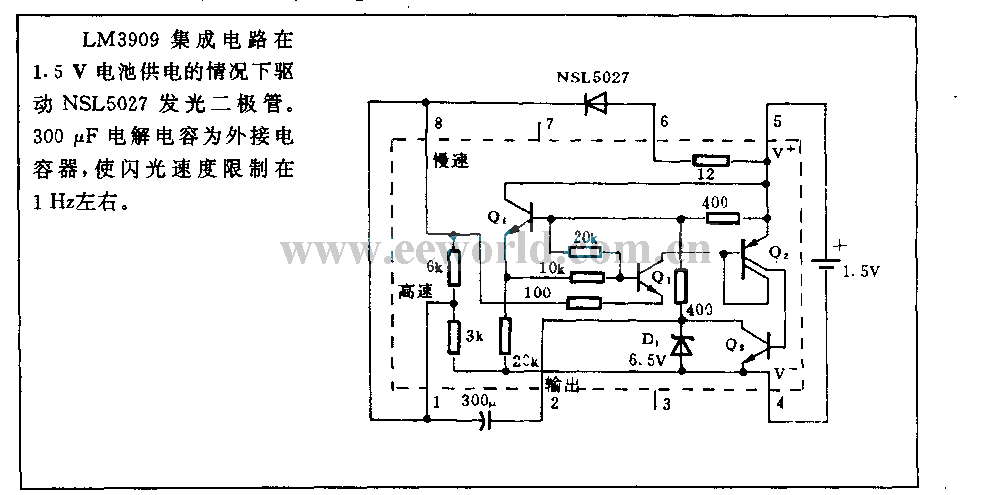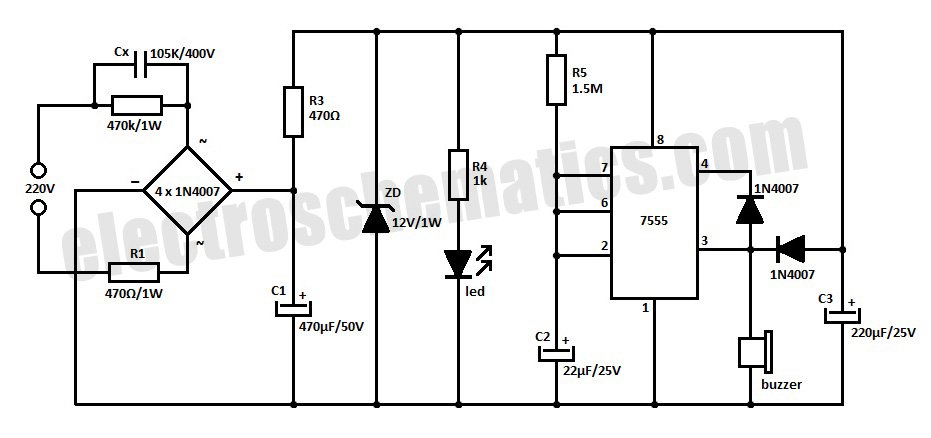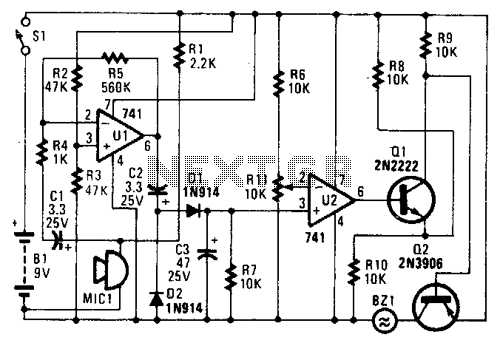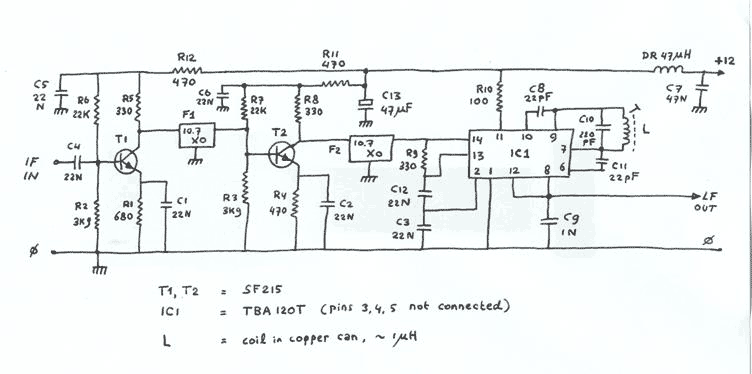
3.6 Volt cell phone battery meter circuit
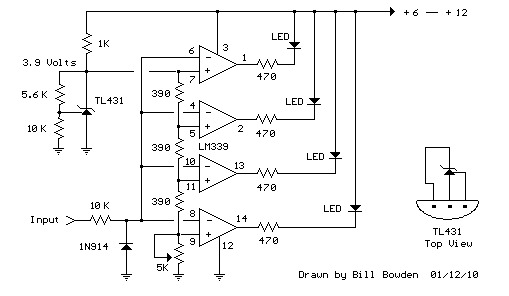
This circuit functions similarly to the previous one and features a 4 LED bar graph that displays the voltage of a common 3.6-volt lithium-ion rechargeable cell phone battery. The reference voltage is supplied by a TL431 programmable voltage source, which is configured to 3.9 volts through a connection to a 1K resistor. The lower reference for the LED at pin 14 is established using a 5K adjustable resistor.
The circuit employs a TL431 voltage reference to create a stable reference point for the LED indicators. The TL431 is a programmable shunt voltage reference that can be adjusted to provide a desired output voltage, in this case, set to 3.9 volts. This voltage level is crucial for accurately representing the battery voltage on the LED bar graph.
The 1K resistor connected to the TL431 serves to limit the current flowing through the reference pin and helps in establishing the desired output voltage. The 5K adjustable resistor allows for fine-tuning of the lower threshold voltage at pin 14, which controls the activation of the LED indicators. By adjusting this resistor, the user can set the point at which the first LED lights up, indicating that the battery voltage has reached a specific lower limit.
The 4 LED bar graph visually represents the battery voltage level, with each LED corresponding to a specific voltage range. When the battery voltage is above the set threshold, the corresponding LEDs will illuminate, providing an immediate visual indication of the battery status. This circuit is particularly useful in portable electronic devices, where monitoring battery levels is essential for ensuring optimal performance and preventing unexpected shutdowns.
Overall, the design is straightforward yet effective, utilizing common electronic components to achieve a functional and user-friendly battery voltage monitoring solution.This is a similar circuit to the above and provides a 4 LED bar graph indicating the voltage of a common 3.6 volt Lithium - Ion recharable cell phone battery. The reference voltage is provided by a TL431 programmable voltage source which is set to 3.9 volts where the TL431 connects to the 1K resistor.
The lower reference for the LED at pin 14 is set with the 5K adjustable resistor.. 🔗 External reference
The circuit employs a TL431 voltage reference to create a stable reference point for the LED indicators. The TL431 is a programmable shunt voltage reference that can be adjusted to provide a desired output voltage, in this case, set to 3.9 volts. This voltage level is crucial for accurately representing the battery voltage on the LED bar graph.
The 1K resistor connected to the TL431 serves to limit the current flowing through the reference pin and helps in establishing the desired output voltage. The 5K adjustable resistor allows for fine-tuning of the lower threshold voltage at pin 14, which controls the activation of the LED indicators. By adjusting this resistor, the user can set the point at which the first LED lights up, indicating that the battery voltage has reached a specific lower limit.
The 4 LED bar graph visually represents the battery voltage level, with each LED corresponding to a specific voltage range. When the battery voltage is above the set threshold, the corresponding LEDs will illuminate, providing an immediate visual indication of the battery status. This circuit is particularly useful in portable electronic devices, where monitoring battery levels is essential for ensuring optimal performance and preventing unexpected shutdowns.
Overall, the design is straightforward yet effective, utilizing common electronic components to achieve a functional and user-friendly battery voltage monitoring solution.This is a similar circuit to the above and provides a 4 LED bar graph indicating the voltage of a common 3.6 volt Lithium - Ion recharable cell phone battery. The reference voltage is provided by a TL431 programmable voltage source which is set to 3.9 volts where the TL431 connects to the 1K resistor.
The lower reference for the LED at pin 14 is set with the 5K adjustable resistor.. 🔗 External reference
